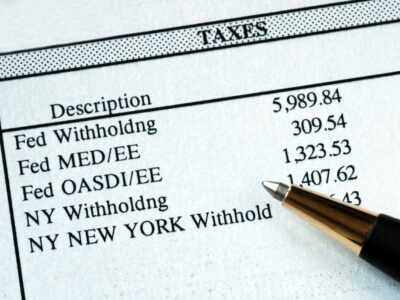Statement of Shareholders Equity: In-Depth Explanation and Analysis

Shareholders’ equity, as noted, is the total amount that a company could repay shareholders in the event of liquidation. Common stock shareholders are last in line for repayment in the event a public company files for bankruptcy. The retained earnings are used primarily for the expenses of doing business and for the expansion of the business. Retained earnings are part of shareholder equity as is any capital invested in the company.
What Is a Good Shareholders’ Equity Number?

For example, if the assets are liquidated in a negative shareholder equity situation, all assets will be insufficient to pay all of the debt, and shareholders will walk away with nothing. Shareholders’ equity can help to compare the total amount invested in the company versus the returns generated by the company during a specific period. The cost of equity is another vital measure to evaluate when analyzing a shareholders equity statement.
Balance Sheet Assumptions
In Note 6 to the financial statements on page 56, we see there were in fact four million shares (rounded) issued to employees as part of their non-cash compensation. A $0.05 par value would be $200,000, well below the rounding limit on these financials. In any case, the increase to owners’ equity as a result of additional paid-in capital during 2019 was $11.001 million. The statement of cash flows highlights the major reasons for the changes in a corporation’s cash and cash equivalents from one balance sheet date to another.

Everything You Need to Know About the Statement of Shareholder Equity

Dividend recapitalization—if a company’s shareholders’ equity remains negative and continues to trend downward, it is a sign that the company could soon face insolvency. To grasp the relationship fully, let’s start with where these statements connect. The Statement of Shareholder Equity reflects the changes in equity over a specific time frame, including new equity investments, retained earnings, or loss, and any paid dividends. Lastly, if a company incurs a loss, it must be deducted from retained earnings. If the losses exceed the available retained earnings, it might eat into other areas of equity – this situation can lead to negative shareholders equity.

What is a statement of shareholders’ equity?
- Primarily, as these initiatives require substantial financial investment, they may result in a temporary decrease in dividends or increase in shares, potentially causing concern amongst shareholders.
- Option e) takes into account the value of the results from the $50 million spent so far, which is $50 million, and adds the additional $20 million required to bring the laptop to market.
- This reverse capital exchange between a company and its stockholders is known as share buybacks.
- Treasury stock is the amount of shares that the company has bought back from its shareholders.
- This is the amount of company stock that has been sold to investors and not repurchased by the company.
- In the final section of our modeling exercise, we’ll determine our company’s shareholders equity balance for fiscal years ending in 2021 and 2022.
- All of the following are common reasons why small-business ventures fail except Long-term focus.
The country with a relatively abundant factor will have a comparative advantage in producing the goods that intensively use that factor. Consequently, the relative world price will reflect the relative scarcity of factors. In the IT field, it is crucial to stay up-to-date with the latest technologies and trends. I have a solid foundation of technical skills that includes programming languages, database management, networking, and systems administration. I am also adept at problem-solving and troubleshooting, which are essential skills in resolving technical issues efficiently.

Join Over Half a Million Premium Members Receiving…
The net result of the four financing activities caused cash and cash equivalents to increase by $28,000. Cash outflows used to repay debt, to retire shares of stock, and/or to pay dividends to stockholders are unfavorable for the corporation’s cash balance. What remains after deducting total liabilities from the total assets is the value that shareholders would get if the assets were liquidated and all debts were paid up. The shareholders equity ratio measures the proportion of a company’s total equity to its total assets on its balance sheet. The fundamental accounting equation states that the total assets belonging to a company must always be equal to the sum of its total liabilities and shareholders’ equity. For instance, a growing balance in retained earnings as shown in the equity statement over a period of time could imply company’s profitability is increasing.
- High exports contribute to a current account surplus, but imports and domestic demand also play a role.
- You can calculate this by subtracting the total assets from the total liabilities.
- The “Treasury Stock” line item refers to shares previously issued by the company that were later repurchased in the open market or directly from shareholders.
- Under a hypothetical liquidation scenario in which all liabilities are cleared off its books, the residual value that remains reflects the concept of shareholders equity.
- This can result in lower rates of upward mobility, limited access to high-paying jobs, and perpetuation of social and economic disparities over time.
- This figure is subtracted from a company’s total equity, as it represents a smaller number of shares that are available to investors.
The Motley Fool reaches millions of people every month through our premium investing solutions, free guidance and market analysis on Fool.com, top-rated podcasts, and non-profit The Motley Fool statement of stockholders equity Foundation. The closer the ratio is to 100%, the more its assets have been financed with stock rather than debt. In general, a number below 50% indicates a company that is heavily leveraged.
- The totals on a trial balance reveal whether the total debits equal the total credits.
- Shareholder equity is the difference between a firm’s total assets and total liabilities.
- Cash takes up a large portion of the balance sheet, but cash is actually not considered an asset because it is expected that cash will be spent soon after it comes into the business.
- Stakeholders need accurate, accessible, and timely information to make sound decisions.
- In most cases, a company’s total assets will be listed on one side of the balance sheet and its liabilities and stockholders’ equity will be listed on the other.
- Retained earnings are the profits that a company has earned and reinvested in itself instead of distributing it to shareholders.
What Can Shareholder Equity Tell You?
For example, the SCF for the year 2023 reports the major cash inflows and cash outflows that caused the corporation’s cash and cash equivalents to change between December 31, 2022 and December 31, 2023. Shareholder equity (SE) is a company’s net worth and it is equal to the total dollar amount that would be returned to the shareholders if the company must be liquidated and all its debts are paid off. Thus, shareholder equity is equal to a company’s total assets minus its total liabilities. However, it’s a crucial tool for helping business owners evaluate potential investments and measure their business’s performance and worth. Since equity accounts for total assets and total liabilities, cash and cash equivalents would only represent a small piece of a company’s financial picture. Return on equity is a measure that analysts use to determine how effectively a company uses equity to generate a profit.
- The retained earnings portion reflects the percentage of net earnings that were not paid to shareholders as dividends and should not be confused with cash or other liquid assets.
- To mitigate the effect of the annual accounting period concept, the tax law permits the carryforward of excess charitable contributions of a particular year to other years is true.
- The final item included in shareholders’ equity is treasury stock, which is the number of shares that have been repurchased from investors by the company.
- This will provide me with a deeper understanding of business strategy and leadership skills necessary for managerial roles.
- Hence, the Statement of Shareholder Equity serves as a link through which the effects of income statement activities flow into the balance sheet.
Outstanding Shares
Treasury shares can always be reissued back to stockholders for purchase when companies need to raise more capital. If a company doesn’t wish to hang on to the shares for future financing, it can choose to retire the shares. The equity capital/stockholders’ equity can also be viewed as a company’s net assets. You can calculate this by subtracting the total assets from the total liabilities.
Successful investors look well beyond today’s stock price or this year’s price movement when they consider whether to buy or sell. Finance Strategists has an advertising relationship with some of the companies included on this website. We may earn a commission when you click on a link or make https://www.bookstime.com/ a purchase through the links on our site. All of our content is based on objective analysis, and the opinions are our own. Option A, Hotel Sales and Marketing, refers specifically to a function within the hospitality industry and is not typically classified as a marketing intermediary.